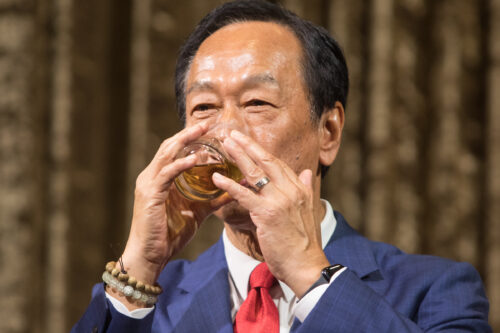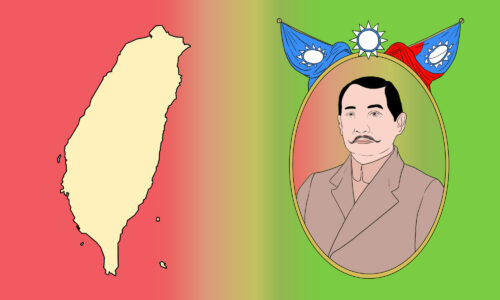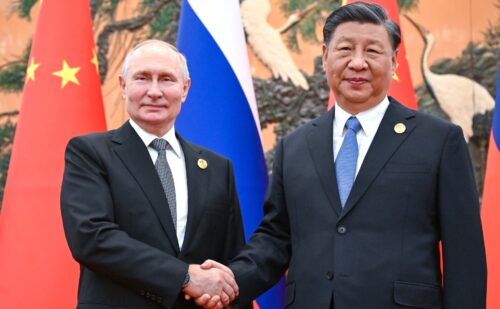China issues economic integration plan for Taiwan while displaying military might
Beijing is brandishing the stick of naval and air power in the South China Sea, and has now unveiled a new carrot: a plan for closely integrating Taiwan’s economy with that of Fujian Province. So far, the Taiwanese are unimpressed.

Yesterday, the Central Committee of the Communist Party of China (CPC) and the State Council jointly issued a planning document (original text and English translation) containing 21 specific points for turning Fujian Province — situated on China’s southeast coast opposite Taiwan — into a demonstration zone for “integrated development” with Taiwan.
This concept was previously mentioned in China’s 14th Five-Year Plan (2021—2025), which outlined a specific role for Fujian in “integrated cross-Straits development.” That plan mentioned two existing platforms for such integration: the Pingtan Comprehensive Experimental Zone in Fujian and the Kunshan Experimental Zone in Jiangsu Province.
Pingtan is an island just off the coast of Fuzhou, the capital city of Fujian. In 2007, construction began on a bridge from the Fujian mainland to Pingtan. A road and railway bridge are now both open. One beach on Pingtan is just 68 nautical miles away from Taiwan. China began developing Pingtan as a Taiwan-themed tourist destination in 2016, and named that beach the “68 Nautical Mile Scenic Spot” (68海里景区 liùshíbā hǎilǐ jǐngqū).
The new document opens with the statement that “resolving the Taiwan question and realizing China’s complete reunification is, for the Party, a historic mission and an unshakable commitment,” and is “inevitable.” Fujian, the document continues, has a unique role to play in this regard.
The document calls for Fujian to become the destination of choice for Taiwanese people and companies to pursue development on the mainland. Point no. 13 calls for expedited development of the Pingtan Comprehensive Experimental Zone.
The 21 points include a range of plans for expanding social, cultural, and economic ties between Taiwan and Fujian, and a commitment to create a more “relaxed” (宽松 kuānsōng) policy environment so that people from Taiwan can easily travel to or work and reside in Fujian. Taiwanese residents will no longer be required to register for temporary residence in Fujian. The document makes no mention of traffic in the other direction.
State-owned nationalist rag Global Times called the plan a “blueprint” for Taiwan’s future development.
Carrot and stick
With only four months to go until Taiwan’s presidential election — with Beijing having strong reservations about the front-running candidate, current Vice President William Lai (賴淸德 Lài Qīngdé) — China’s naval forces early this week initiated their largest-ever military exercises in the vicinity of Taiwan.
Earlier today, Taiwan’s defense ministry said it had on Tuesday tracked around 35 Chinese warplanes, including J-10 fighters, around the island, and released a photo showing a Taiwanese warship monitoring the Shandong, the People’s Liberation Army Navy’s (PLAN) second aircraft carrier commissioned in 2019, which the ministry said had passed 60 nautical miles from its coast.
In addition, earlier today, more than 20 Chinese warships sailed through the Bashi Channel (a waterway between the Philippines and Taiwan) and Miyako Strait (a waterway between the Japanese islands of Miyako and Okinawa and one of the few international waterways for China’s PLA Navy to access the Pacific Ocean from the East China Sea). Some Chinese aircraft crossed the Bashi Channel to carry out drills with the Shandong in the Pacific.
A defense analyst told the Financial Times that this week’s exercises are “by far the largest number of ships we have seen training with any Chinese carrier so far,” and that China is seeking to express its displeasure with the recent U.S.-led military exercises.
China staged war games around Taiwan in August 2022 and April this year, and maintains an almost daily military presence in waters around the island.
The busy west Pacific
Today, Japan appointed a serving government official as its de facto defense attache in Taiwan, a move likely to anger Beijing.
In recent months, more than a dozen nations have participated in U.S.-led military exercises in the region. In late August, the U.S., Australia, and Japan carried out a joint exercise in the South China Sea off the western Philippines, and in September the U.S. sent an amphibious group to join South Korean and Canadian naval ships in the Yellow Sea.
A U.S. and a Canadian warship sailed through the Taiwan Strait on Saturday, according to the U.S. Navy, and the two countries’ navies also conducted a series of exercises in the South China Sea this week.
In other developments, Taiwan’s defense ministry yesterday released a white paper entitled National Defense Report 2023 that outlines a plan for Taiwan to produce 7,700 unmanned aerial vehicles (UAVs) for military use by 2028. The UAVs form part of Taiwan’s “Five-year Force Buildup Plan” that includes increasing foreign arms purchases, improving indigenous defense technologies, improving training, and increasing recruitment.
A “ridiculous” plan
Amid all of these developments, Beijing seems to prefer sticks to carrots: Yesterday, the spokesperson of China’s Taiwan Affairs Office issued a further economic threat to Taiwan. Addressing his audience in Taiwanese, Chén Bīnhuá (陳斌華) stated that his office supports investigations to suspend or partially suspend tariff preferences granted to Taiwanese goods under the Economic Cooperation Framework Agreement (ECFA), a free trade agreement signed between Beijing and Taiwan in 2010, because Taiwan’s ruling Democratic Progressive Party (DPP) had undermined cross-strait relations.
In February 2021, China announced it would restrict imports of Taiwanese pineapples. Since then, further restrictions have been placed on dozens of other Taiwanese products, including wax and custard apples, grouper fish and other seafood products, snacks, and alcohol brands.
When a senior Chinese official raised the integration plan mentioned in the 14th Five-Year Plan at a forum in June, Taiwan’s Mainland Affairs Council called the proposal “meaningless” and “futile,” and said that it “belittles” Taiwan.
Earlier today, Wang Ting-yu (王定宇 Wáng Dìngyǔ), a Taiwanese lawmaker from the ruling Democratic Progressive Party (DPP), said China’s new plan for “integrated development” with Taiwan was “ridiculous.”
It seems unlikely that Beijing’s new document is going to change any minds in Taiwan.






